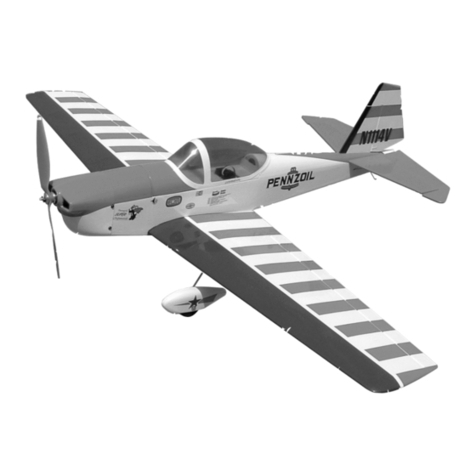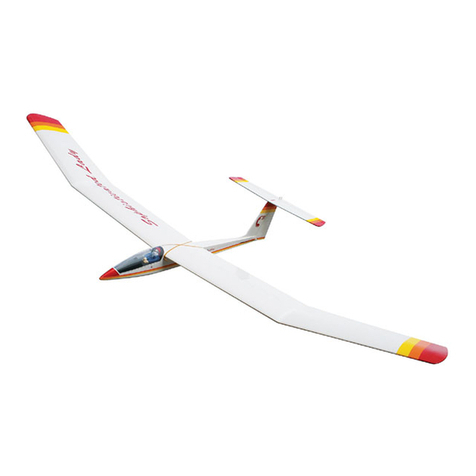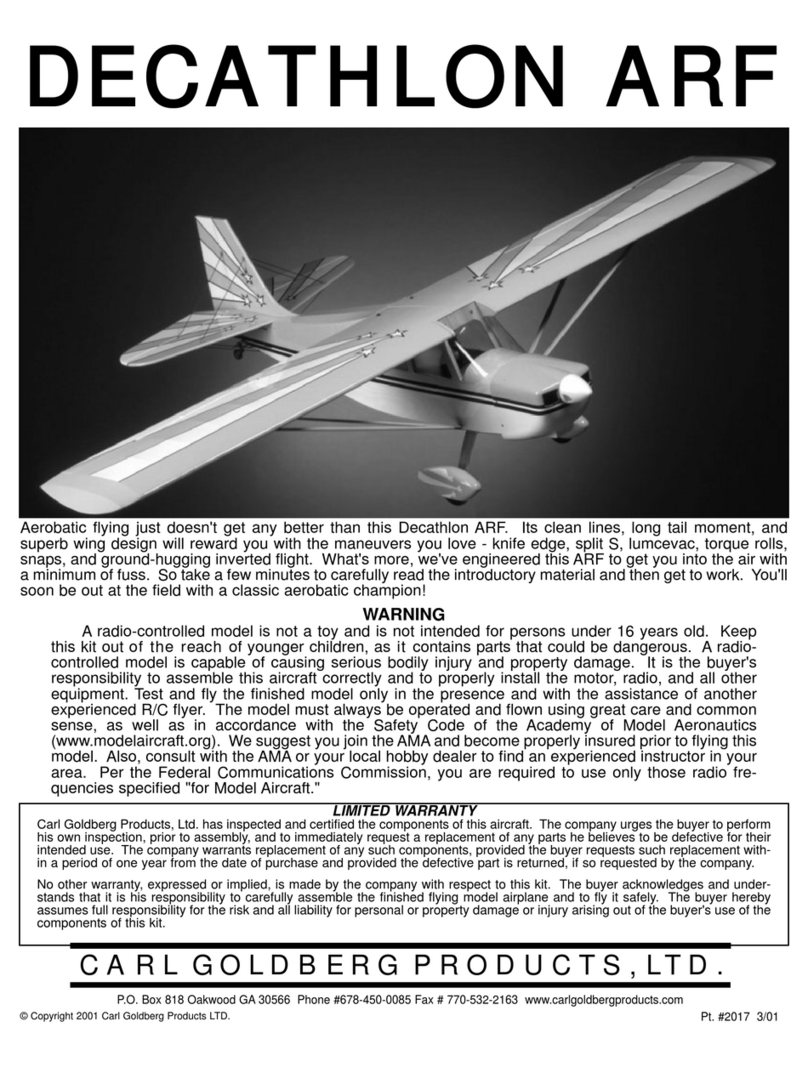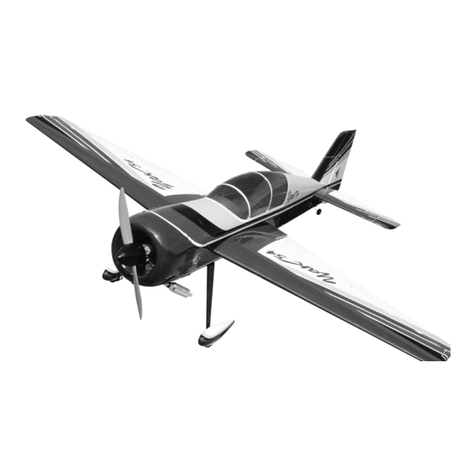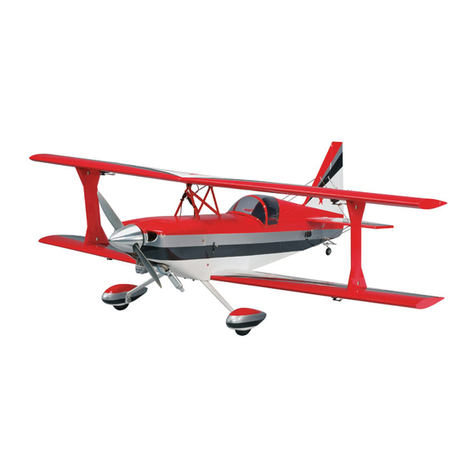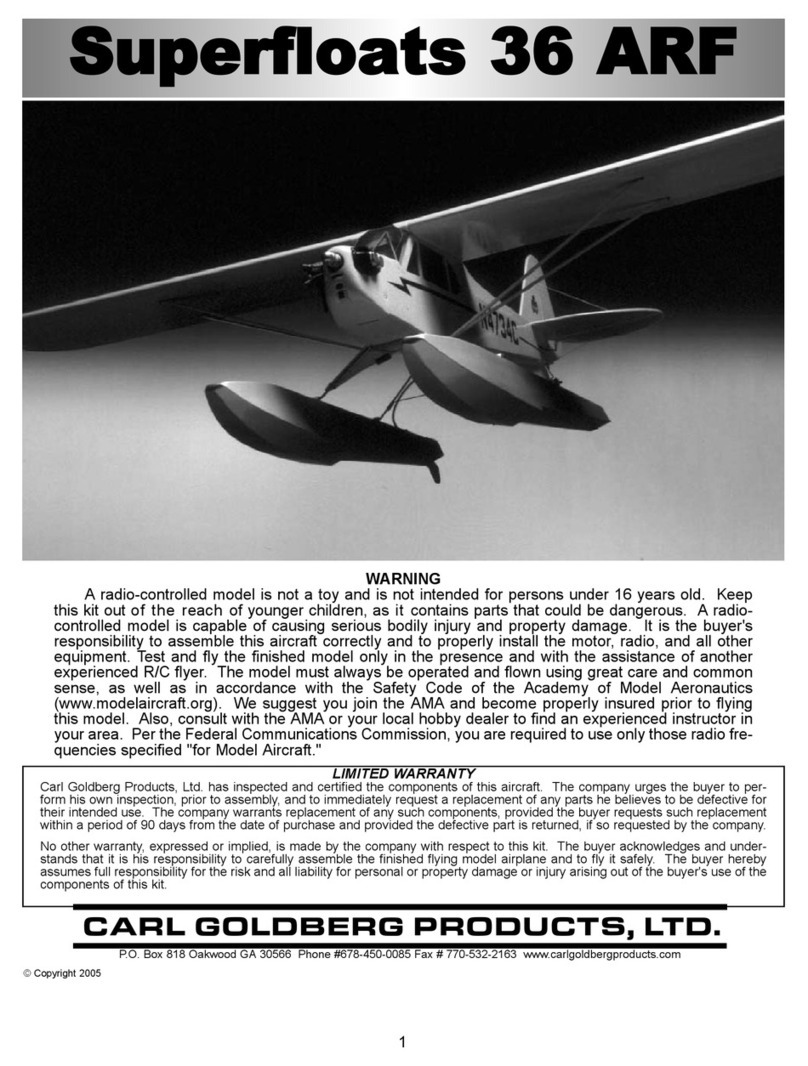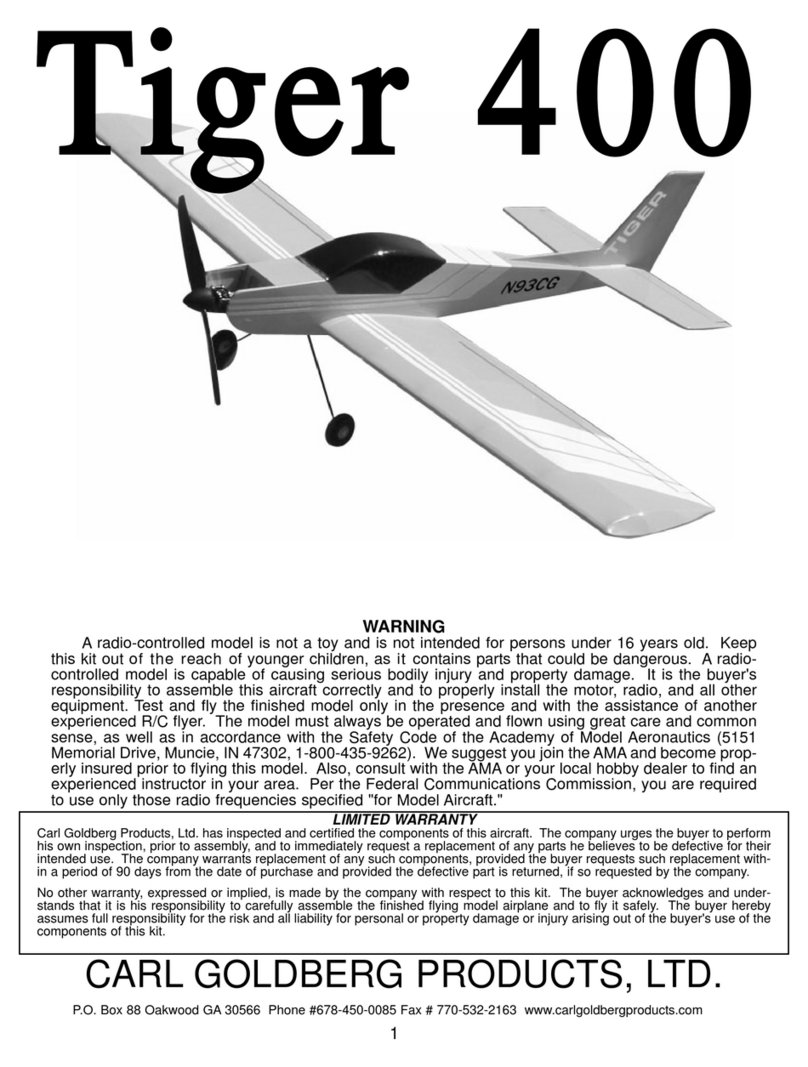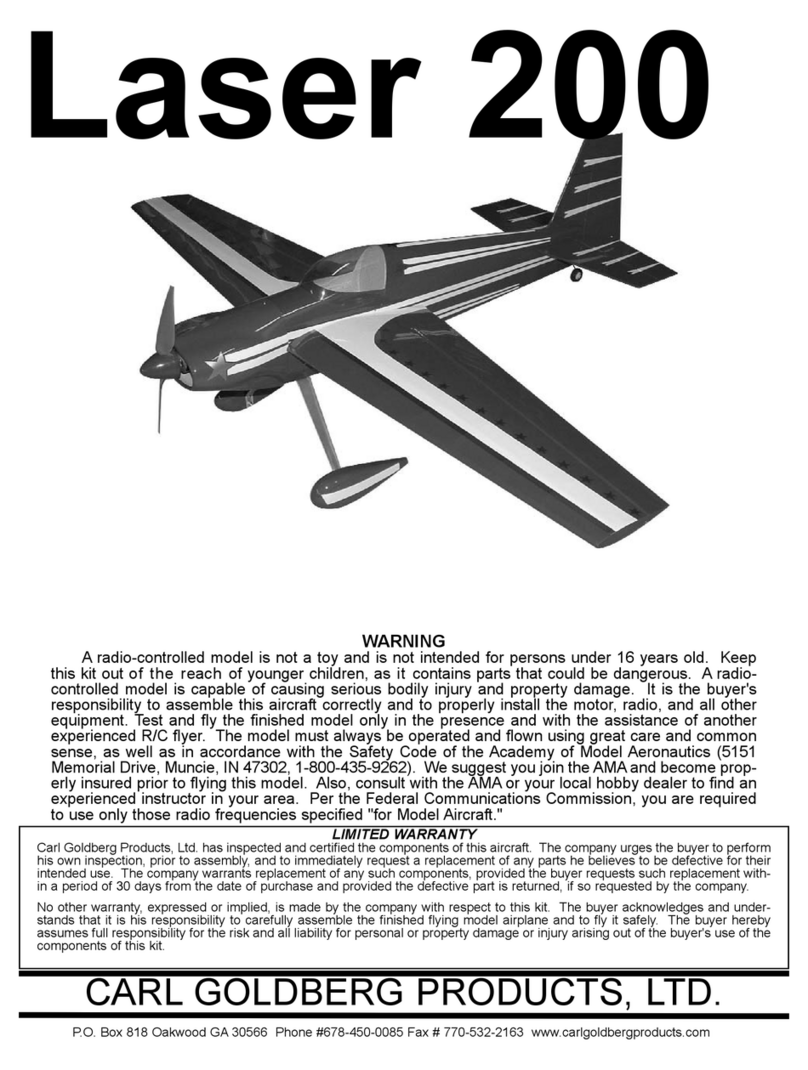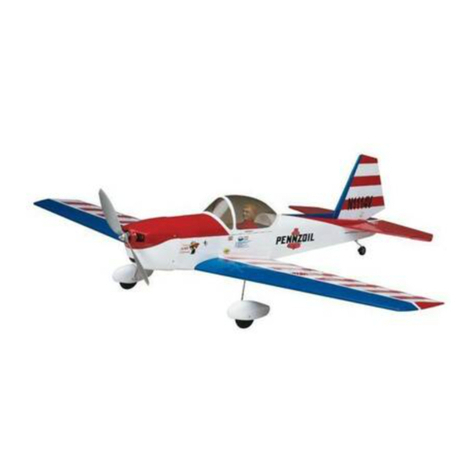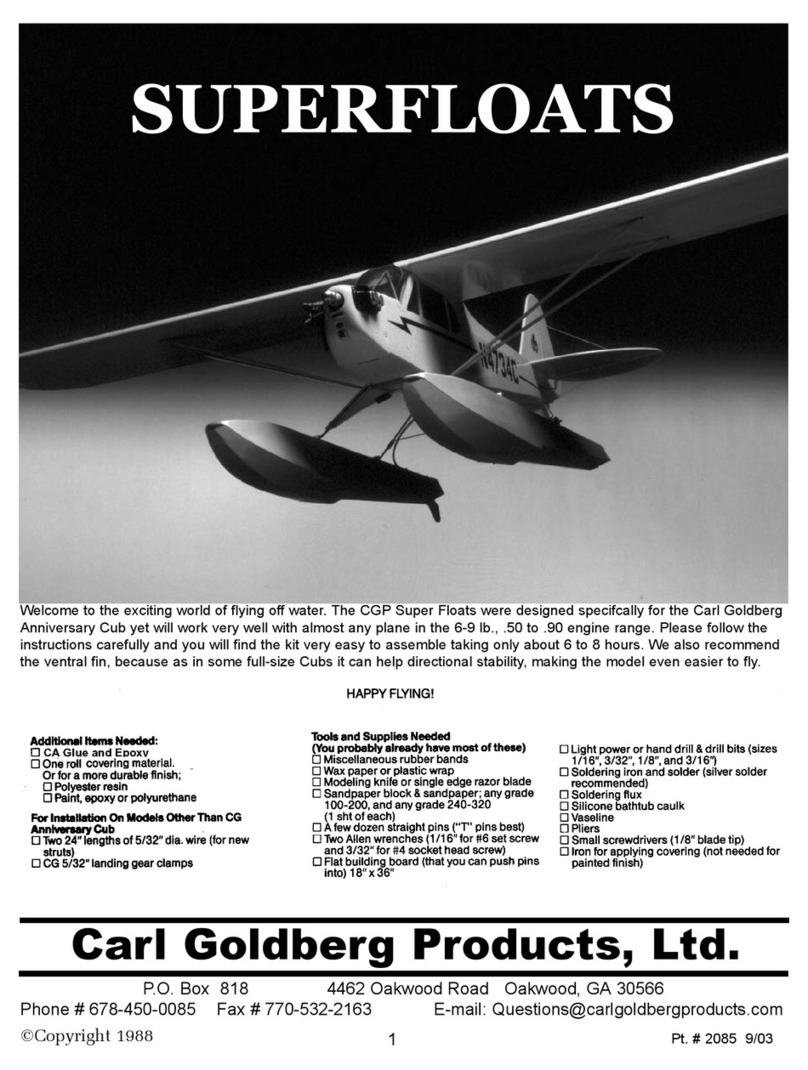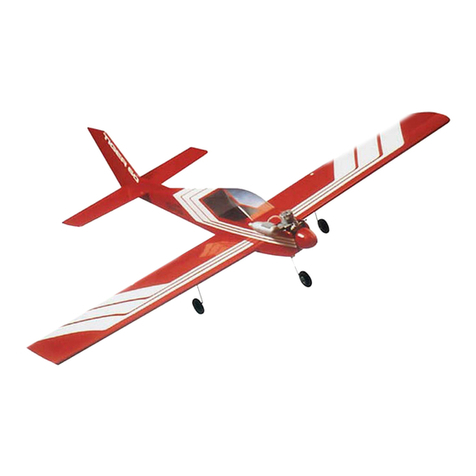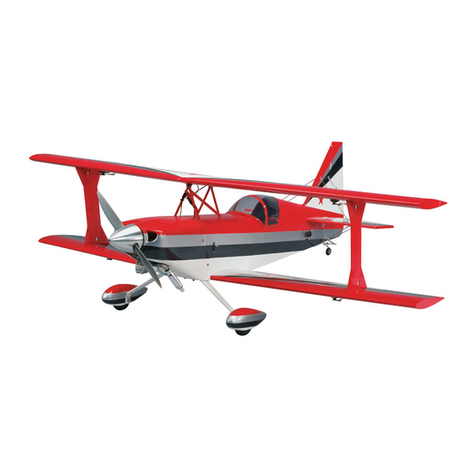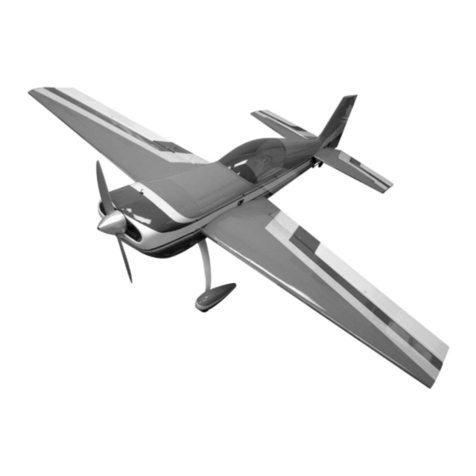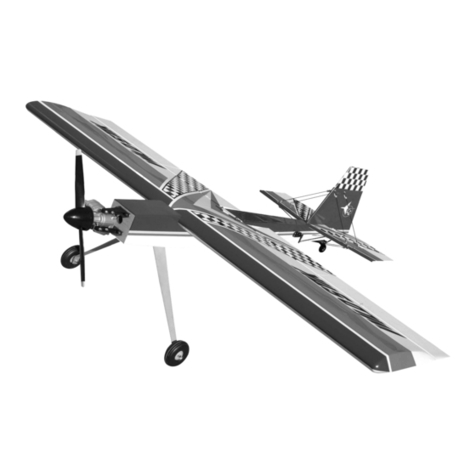
INTRODUCTION
USING THIS INSTRUCTION
MANUAL
Befae
you start glLing
and
sancing,
take
some time becoming
familiar with the plans and looking ttvough this entire Instruction
Booklet. It is
desigied
to
glide
you through the cons1ruction
process step
by
step, so
bli
ld in
1he
order given in this book.
Balarcing, setting
L4>
and flying the model are also covered.
Like a ful-size airplane, the Mirage 550
is
blilt from basic
structu-es (stabilizer. fin,
"Mng,
etc.
),
which
are then assembled into
the complete airplane. Special proce<ises
or
com
ments
...,;11
usually be explained before a step,
so
you
...,;
11
be prepared. If a
step
begns
'Mth a statement like "Note," '
Warning
,"
or
''Important,"
it is a good idea to read through
1he
step before doing
it
A check-off box appears
at
1he
begnring
of
each step.
Check
these boxes as you
bli
ld, so you
can
tell
at
a glance what steps
you have completed.
Some
steps are repeated
and
must be
marked twice, as in the case
of
the left
and
ri~t
...,;ng
panel.
HOW
TO
READ THE PLAN
There is one plan sheet
in
this
kit,
shO"Mng
the Fuselage
(Body), the Wing, and the Tail Parts. Everything on the plan is
ctawn to ful-size and shape
and
shows h
ow
the firished parts fit
together.
The plan is drawn to show the
mode
l completely assembled,
but as a resut, the areas inside
or
1.11demeath
a-e covered up,
making it hard to
u,derstand
how
these parts fit together.
Therefore, for darity,
some
parts are
dra'M1
'Mth
hidden lines,
others with breakaway views,
and
some a-e entirely removed from
the strl.cilse and
shOY.n
separately.
For example, on the fuselage, the left side of the completed
model has been removed to show the details inside. Sometimes a
suface
is broken
away
to reveal the detail behind
or
u,demeath.
Dashed lines inc:icate details that are hidden behi
nd
or
1.11der
another part
of
the
suface
.
FUSELAGE DRAWN WITH LEFT SIDE
REMOVED
10
REVEAL INNER
FUSELAGE DETAILS
DASHED
LI
NES SHOW
WIRES "HIDDEN"
BEHIND BATTERY _ _.,.,....__
THE WING IS SHOWN
CU
T
THROUGH
AT
THE
CENTER-
THIS IS A "SECTION" VIEW
FUSELAGE SI
DE
"BREAK-AWAY" VIEW
TO
SHOW HOW SWITCH
IS MOUNTED
The model is made from
fOIS
varieties of
wood
: balsa, bass,
bi
rch. and various plywoods. Each
kind
of
wood
has its O\Wl
characteristic
end
grain pattern (as viewed from
1he
end)
which
has
been drawn on the plan. You can easily use these end
gain
patterns toidentifywhat kind
of
wood
is shown for a part,
if
you are
in
dowt
HOW
TO
USE THE PLAN
The planisused in several
ways
. The wings, stabilizer,
cM1d
fin
are assembled
drectly
over the plcri. Each
wood
part is matched
over its
carespondng
location printed
on
the plcri and
pimed
in
place.
To
prevent
rtiring
y01S
plan from glling
YOU'
wings,
etc.
to
it,coverthe area youare working
on
'M1h
waxed paper.
The paperthe plan is printed
on
can
expand
or
contract slig,tly
wi1h
chcriges in temperatl.re
or
humidty.
Because
of
this, a pre-
formed partsuch
as
the notched
...,;ng
traifing edge
may
not
exactly
match the plan. This is
no
problem,
as
slight deviations in the
outline
or
size will
not
noticeably affect
ffi~
perform.rice
.
Because the fuselage
plugs
together
.rid
is self-alig1ing, it is
not
bli
lt cirectly over the plan. As you assemble the fuselage, you
will find the plan helpfu in identifying parts and h
ow
things fit
together.
The plan also shows the installation
of
a typical radio. battery
and
al
remairing
ecµpment
and
hardware needed to
com
plete the
model.
By
referring
to
the examples shown, you shotJd be able to
install
YOU'
OVv'l1
radio, etc., even if it is
not
the same as what is
shown on the plan.
IDENTIFYING PARTS
Parts for the wing
a-e
bt.neled
together; likewise, parts for the
tail assembly
are
also
grouped
. Die-cut plywood
cM1d
balsa sheets
of
common
sizes
are
buidled
together, so they are less likely to
be
damaged cluing shipping and
hcridling.
The
various screws,
hinges,
and fittings are packaged
in
plastic bags.
PREPARING FOR
ASSEMBLY
Set
a flat, wa-p-free
pinring
board on
YOU'
work
bench.
My
material that accepts pins, such
as
insuation bo..-d, soft plywood,
or
dry-wall (sheetrock)
...,;11
work. I
mportant:
any
warps
or
bends
in the pinning
board
will result in wings
or
tail surfaces that
arealso
warped
or
bent,
making
your
model
more difficult to
fly. Make
SLl'e
that the pi
mng
bo..-d is flat
by
laying a
strai~t
edge across it You
may
be able to
carect
a warped board by
shimming its l
ow
a-eas.
Position the a-ea of the plan (such
as
the stabilizer) on v.ttich
youare going
to
btild
over the pinring board and tape it
in
place so
the plan laysflat and wrinkle free.
Place a sheet
of
waxed paper over the
work
area to prevent
SUPERJETfrom sticki
ng
to
YOIS
plan and
rtiring
it
CONSTRUCTION TIPS
In assembling
ycu
model, the foll
O"Mng
tips will prove helpfu.
IMPORTANT: ALWAYS READ A FEW STEPS AHEAD. This
will alert you
to
com
i
ng
instructions and
...,;
11
help you
pl
an
accorcingly.
You
may
find it converientto
empty
all
of
the small parts from
the hardware bags into a
co
m
mon
container, such as a margarine
11.b
. This will help you find it
ems
cµckly
.
PL.nch
out
ony
the die-cut (D/C) parts you need as
you
proceed. This will help you keep track of parts, especially the small
ones.
After completing each section
of
the
airaaft
, you may want to
go
bac
k
Md
re-glue the joints, just
in
case some area has been
missed.
Be
carefu
not
to use too little glue,
which
will leave the
model
weak
,
or
too
much glue,
which
can
make
the model heavy.
Properly glued j
oints
are im
portait
to the overall
strength
of
the
model.
SUPER
JEPM
is recom
m~ded
f
or
most
parts
of
the
assembly, although
JET
Epoxy
m
ay
be
used when more
ti
me is
needed forcareftJ placement.
